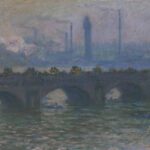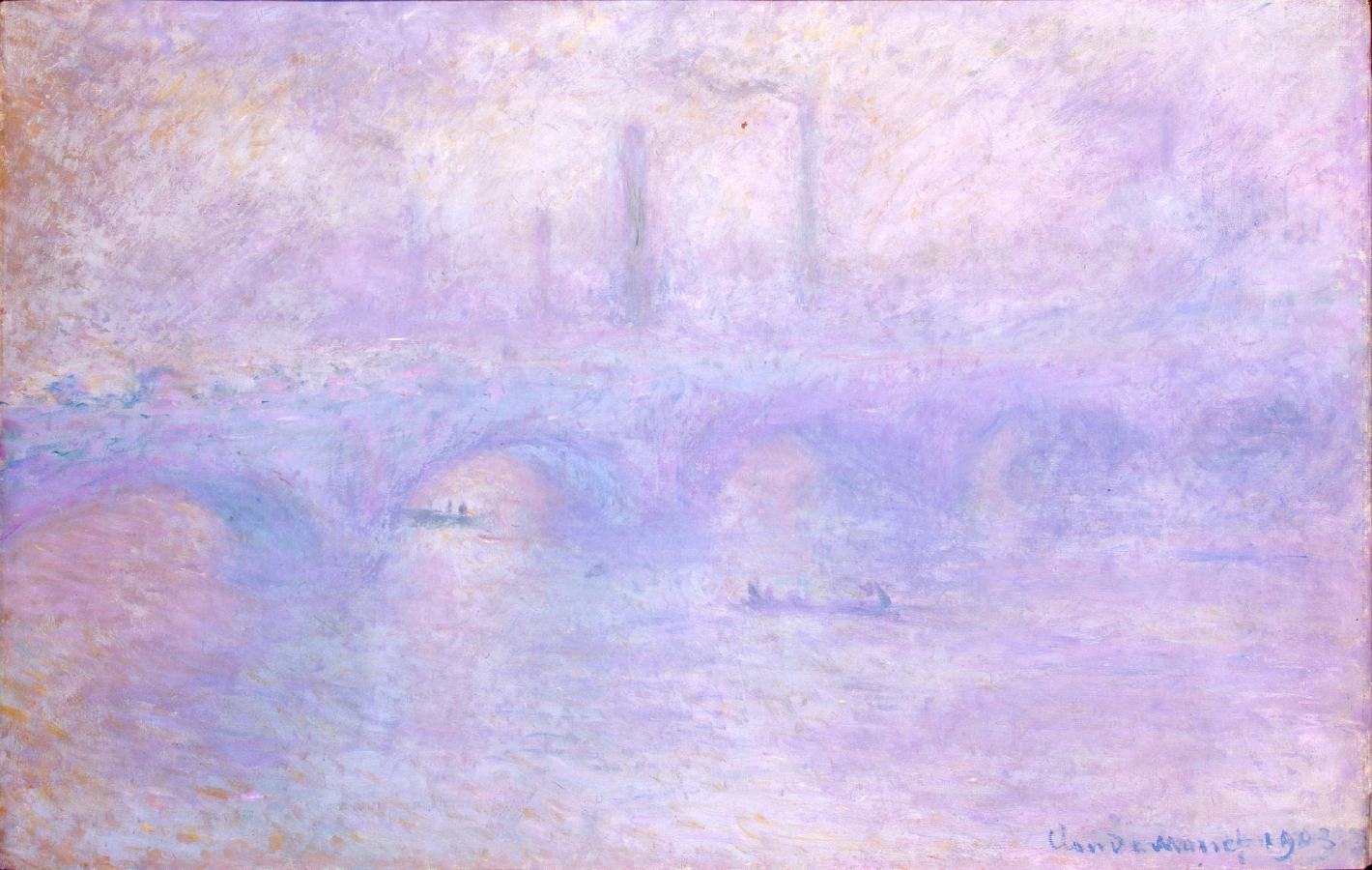Monet, Claude (1840-1926)
Pont de Waterloo, effet de brouillard (Waterloo Bridge. Effect of Fog)
1903
Oil on canvas, 65.3 x 101 cm
Hermitage Museum, Saint Petersburg
This is just one of a series of famous views of London created by Monet during the later Impressionist period. The urban theme was making its appearance not for the first time in his work, although Monet concentrated mainly on rural landscapes. In his cycle of London works, the central motif was the fog, the marvellous way in which it changed light and air and the very atmosphere, literally swallowing up buildings. The capturing of the moment’s passing impression which gave Impressionism its name was replaced by an analysis of complex colour nuances in flickering, changing light. The artist’s trips to London in 1889, 1900 and 1901 seemed to fall always in the foggy season. From his room in the Savoy Hotel, Monet had a view over the Thames towards Waterloo Bridge. The Hermitage canvas comes from a series showing this very view, works which were completed in the artist’s studio at Giverny. (SHM)
Compare:
 Monet, Claude (1840-1926)
Monet, Claude (1840-1926)
Waterloo Bridge
1903
Worcester Art Museum, Worcester
 Monet, Claude (1840-1926)
Monet, Claude (1840-1926)
Waterloo Bridge, le soleil dans le brouillard
1903
National Gallery of Canada, Ottawa
